TRACKING BUCA'S GREEK ARCHITECTURE
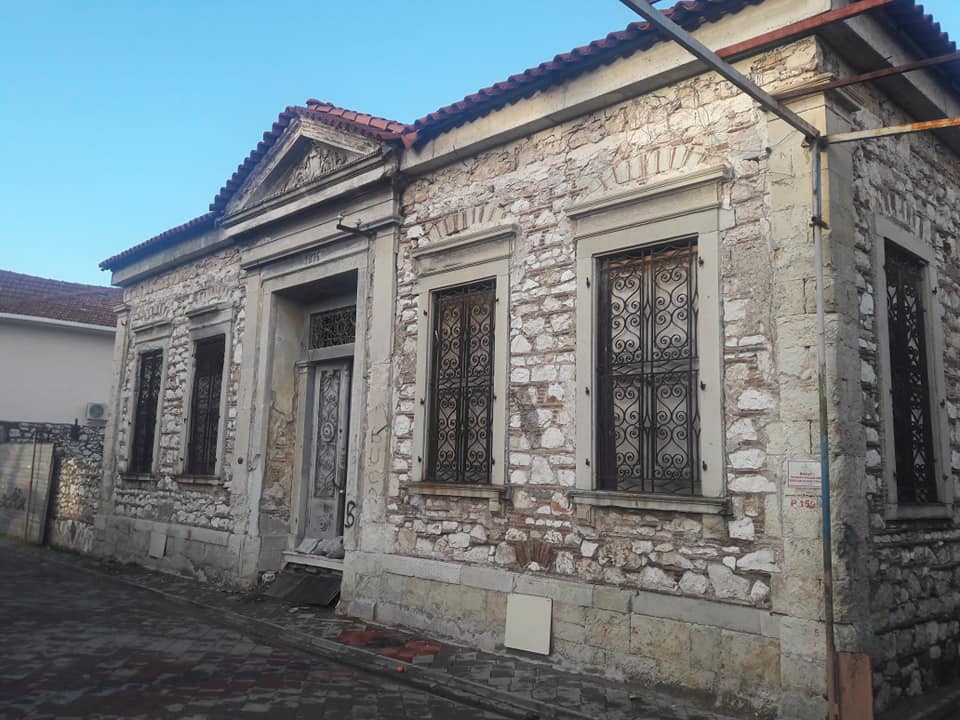
Buca, which was a small Greek village connected to Seydiköy until the 19th century, moved away from its village appearance after European families started to arrive in the early 1800s and became a resort town with close ties to Izmir city center. With the completion of the construction of the railway in 1872, the development process accelerated further and its population exceeded 10,000 in the early 1900s.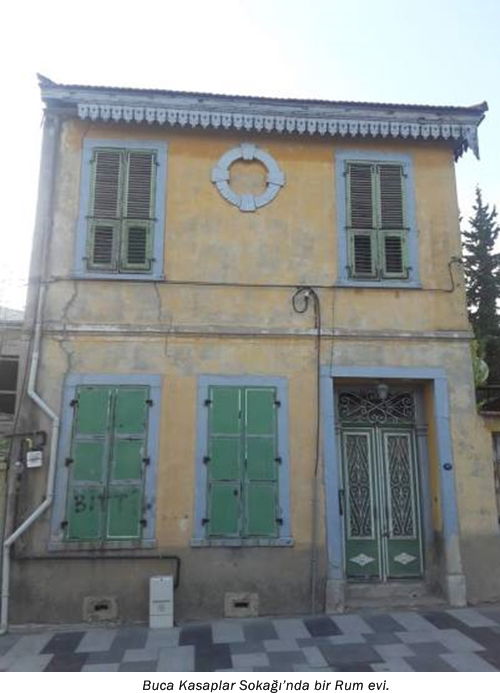
Although Buca has become a mixed town with Levantines and a small number of Armenian, Jewish and Turkish populations, it has continued to preserve its essentially Greek-dominated identity. In his book published in 1878, author John Murray explains that Buca turned into a festival area on the day of Prophet Yahya (Aya Yani). St. John's Day is a very sacred day for the Orthodox Greek population. In addition, Buca's settlement style also provides information about its population structure. The fact that today's Yaylacık and Dumlupınar neighborhoods in Buca were known as upper (apano) and lower (kato) Greek neighborhoods in the past is an indication of this. Although there are places where Levantines are concentrated, such as around the Catholic Church and around the Buca train station, they are far from the neighborhood culture like the Greeks. Levantines had partial relations with the local people, generally living in houses with large gardens and establishing relations among themselves. Various sources provide information about the population of Buca, stating that the Greek population is in the thousands, while the Levantine population does not exceed a few hundred in any source. 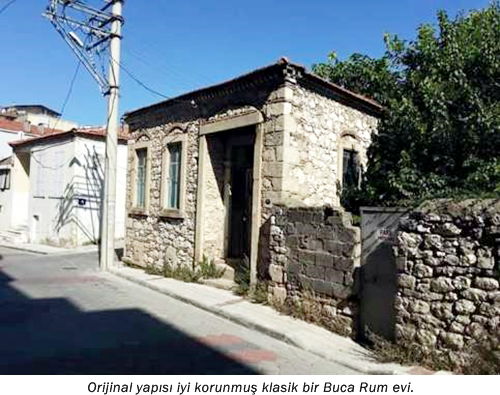
While writing the pre-republican history of Buca, Greek identity takes center stage. Otherwise, it becomes impossible to write the history of Buca before 1922. Today, when visiting the historical Buca region, the area with Greek houses immediately attracts attention and adds color to this historical district, which is subject to intense construction today, and becomes a breathing place for the people of Buca. It can be said that although Buca is unlucky in terms of construction compared to many Izmir districts, it is also lucky in terms of history. Although other historical districts of Izmir, such as Seydiköy, Karşıyaka and Bornova, have some historical mansions, none of them have such a well-preserved historical neighborhood as Buca. Although Seydiköy, which had a Greek majority population in the past like Buca, has not been subjected to intensive construction today and is connected to Gaziemir by maintaining its small structure, its historical neighborhood was destroyed due to a fire in 1922. Karşıyaka, on the other hand, has completely lost its historical identity, except for a few mansions, and has nothing left except its distorted construction and the sea. Bornova, on the other hand, continues to have valuable mansions like Buca and still has a small number of Levantine population. However, it does not have a preserved historical neighborhood like Buca. Undoubtedly, at this point, we cannot talk about the historical Izmir city center. Even today's Izmir, which had a non-Muslim majority before 1922 and is often called 'Smyrna' in historical sources, does not have a historical region. The biggest reason for this is undoubtedly the Great Izmir Fire. The conclusion to be drawn from here is, once again, what a unique history Buca actually has. Even though Buca has lost many of its historical monuments until today, it is still at a point where investment and protection should be made in terms of Izmir's history. Despite all its historical heritage, today many Buca houses are decaying and waiting for their end. However, as long as investments are made and restored, Buca has the potential to become the Bruges of Izmir.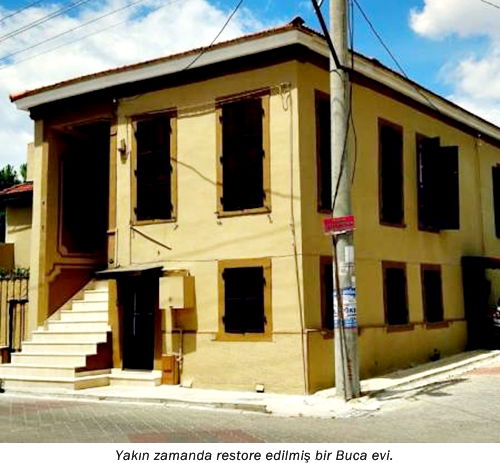
While walking around the streets of Buca, the historical atmosphere of Dumlupınar neighborhood takes you back a hundred years ago. Dumlupınar neighborhood was known as the Lower Greek Neighborhood in the past and was a neighborhood where the upper class lived compared to the upper neighborhood. In fact, after Muslims started coming to Buca, this situation remained unchanged until the 1950s. Farmers continued to live in the upper neighborhood and civil servants continued to live in the lower neighborhood.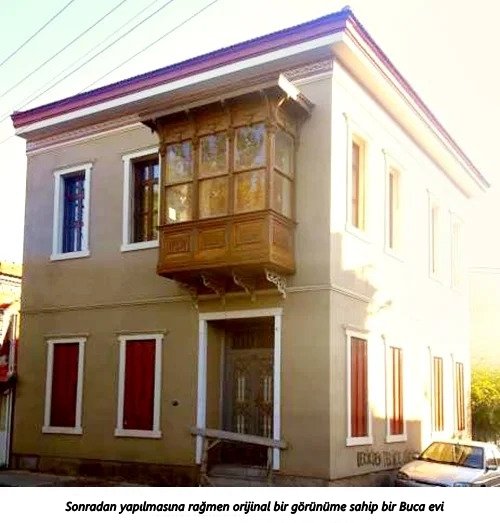
While walking around Dumlupınar neighborhood, one of the reasons why the historical atmosphere is more than Yaylacık, the upper neighborhood, is that Yaylacık neighborhood is not in a protected area today. As a result, while the lower neighborhood was preserved, the upper neighborhood has now been surrendered to apartment buildings, with some exceptions. In the Dumlupınar neighborhood, even the houses built later cannot spoil the atmosphere of the neighborhood because they are stuck to the floor limit.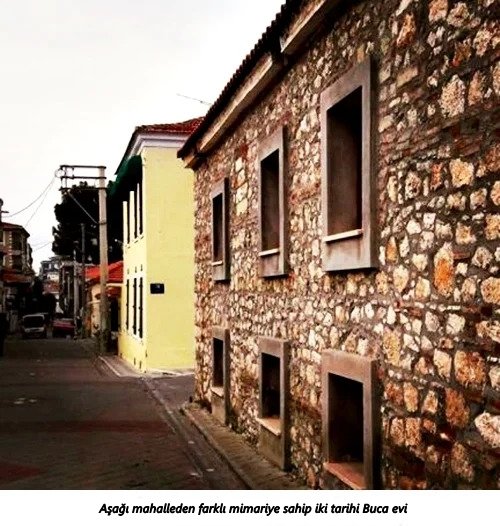
One of the remarkable developments in the Dumlupınar neighborhood is that the houses here also adapt to the cafe fashion. Many houses here are at least saved from destruction by being converted into cafes. Maybe it's best this way. Otherwise, since restoration is a very burdensome and troublesome task, the houses are abandoned to their fate.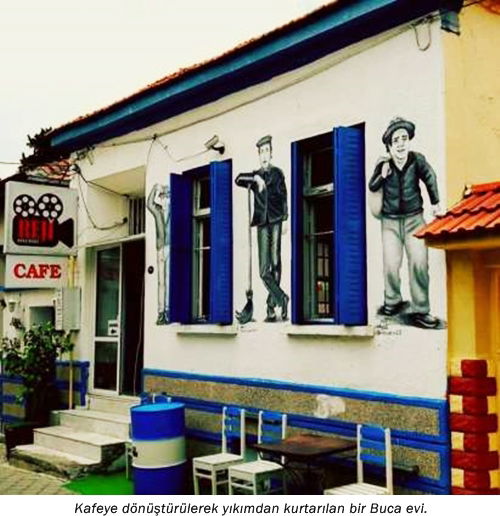
There is not much information about the Greeks in Buca. The biggest reason for this is that the Greeks left Buca hastily in 1922. There is a misconception that the Greeks in Buca left with the population exchange. However, the population exchange is a process that started after the Treaty of Lausanne in 1924. Greek families had left Buca by October 1922. For this reason, it is not possible to find the owners of the houses today. Levantine families remained in Izmir after the war, and there was no hasty escape for most of them, and many maintained their ties with Turkey. Therefore, it is known which Levantine family many houses belong to, or at least it can be guessed based on some clues. This is not the case for Greeks.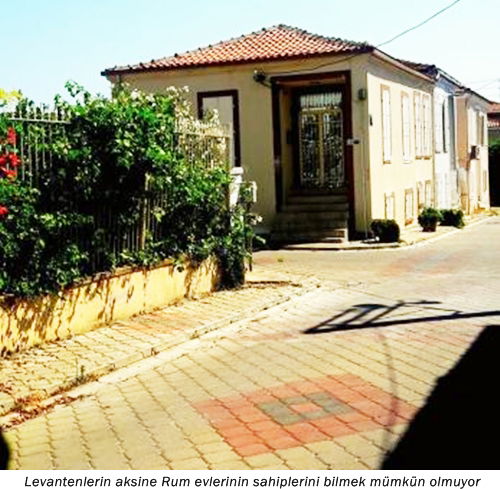
Today, there are two clues given by the houses while wandering around the historical neighborhoods. The first is whether the owners were rich or poor in the past, due to the architecture of the houses. The second is the construction dates of the houses. The construction dates written on the doorways of some of them have been around for more than a century. Most of them have dates corresponding to the end of the 19th century, such as 1876 and 1890. Some of them were made in the early 1900s. Since the lower neighborhood was created at a later date than the upper neighborhood, it would be a surprise to see dates such as 1840 and 1850 in the Dumlupınar neighborhood.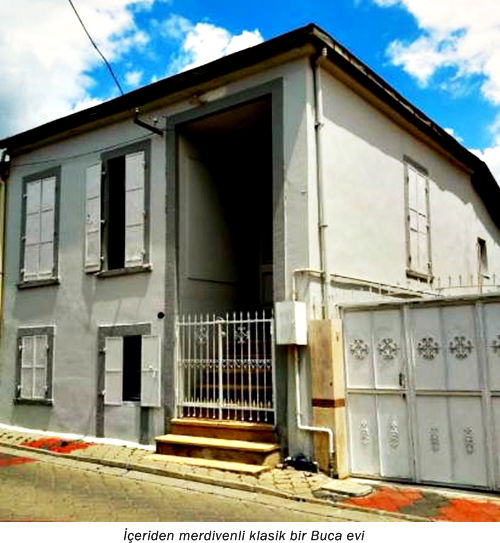
A striking detail in the Dumlupınar neighborhood is that some of the houses have been extravagantly restored. Although the restoration of houses is of course essential, an exaggerated restoration, when necessary, damages the originality of the houses and spoils the historical texture. Some houses are structurally damaged. For example, a side window was opened to a house that did not have any windows, or on the contrary, the window of a house that had a window was closed. Or a new window has opened below.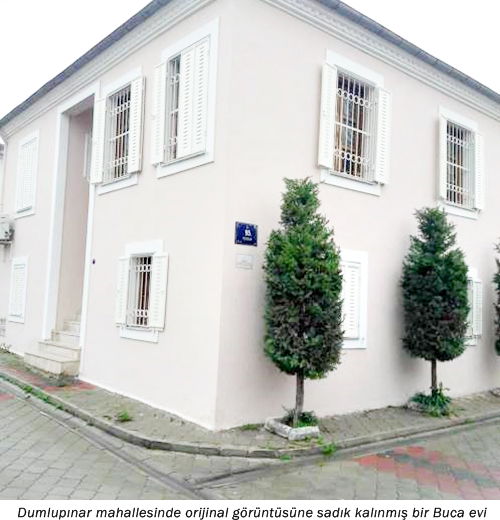
The last thing that needs to be said about the Dumlupınar neighborhood is the state of some of the dilapidated houses. Although many houses are in good condition, the fact that some houses are on the verge of collapse ruins the historical texture of the neighborhood, so to speak, and the authorities should take the necessary steps in this regard.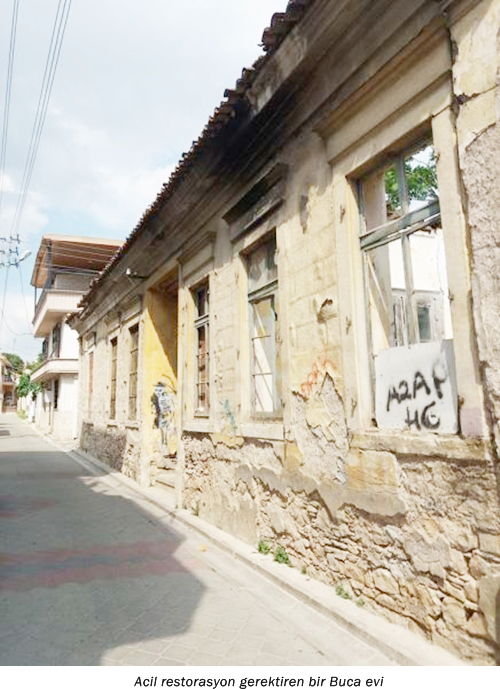
One of the two neighborhoods that make up the historical texture of Buca is the upper neighborhood, that is, Yaylacık neighborhood. This name was given to the neighborhood by the people of Buca, who came from a village called Yaylacık in Greece in the Balkans, to keep the memory of the village alive. However, contrary to popular belief, those who founded this neighborhood were not immigrants who came to Buca. Yaylacık neighborhood, or Apano Mahalla, or upper neighborhood, as the Greeks called it before 1922, is the oldest neighborhood of Buca. This is the first settlement of Buca.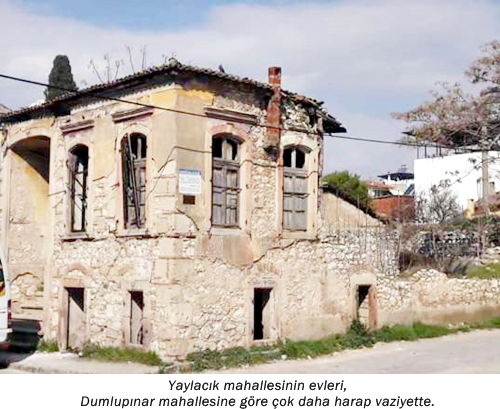
According to Feyyaz Erpi, there were mostly wooden houses in the Yaylacık neighborhood until the mid-1800s. After an earthquake that took place around this time, building wooden houses was largely abandoned and stone houses were preferred. Today, it can be said that the proportion of wooden houses is actually higher in the upper neighborhood than in the lower neighborhood. Unfortunately, most of these wooden houses are in very bad condition due to both age and neglect.
One of the biggest threats to the historical heritage in Buca is people's unconsciousness and the damage it causes to Buca houses. Recently, unfortunately, writings have been written on the walls of most Buca houses with spray paint. This situation creates a very bad appearance.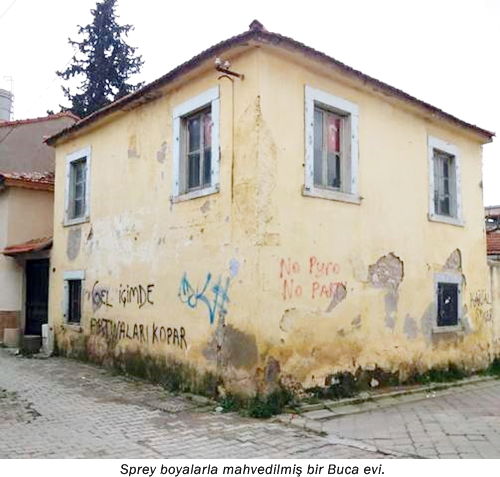
It is observed that the historical buildings in Yaylacık neighborhood are in a much worse condition than in Dumlupınar neighborhood. The fact that these buildings are not within the protected area also has a big impact on this. Only the southern part of Yaylacık neighborhood is within the protected area, and unless the remaining area is included within the protected area, historical buildings will disappear. Today, Yaylacık neighborhood has already gone through a great change with the so-called 'urban transformation'. Of course, not all destroyed houses are historical, but historical houses also have their share of this transformation. However, Yaylacık neighborhood is the oldest settlement in Buca and needs to be protected.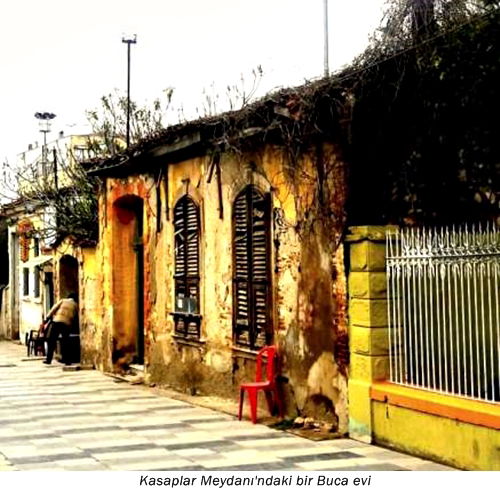
While walking around the streets of Buca, of course, you come across beautiful views as well as sad ones. It can be seen that some Greek houses have been restored and are holding on to life.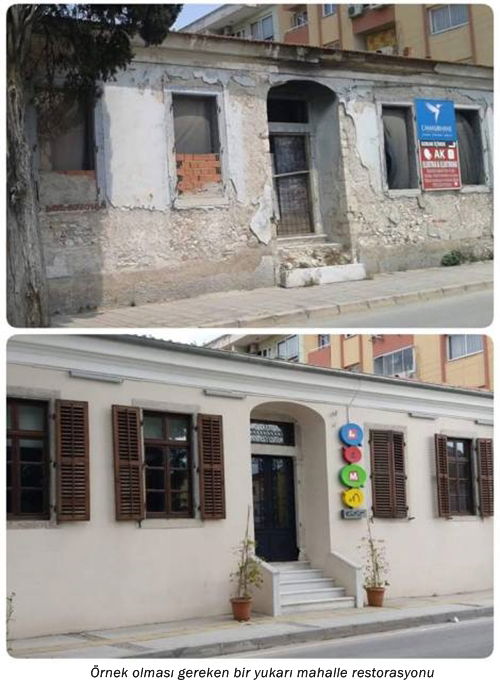
The architecture they have crafted is also admirable at many points and adds color to the history of Buca. For example, the shape of the metal engraved on the doors is a work of great mastery. Or, it is genius that they create gaps in the walls inside the houses to keep it cool in the summer and thus provide air flow. While heat in summer is a big problem in houses made of concrete today, at least a hundred years ago, simple solutions to summer heat were found and houses remained cool.
Today, not much remains of the Greeks of Buca. Even the information known about them is very limited. In addition, the houses they built still stand and constitute an important part of Buca's history.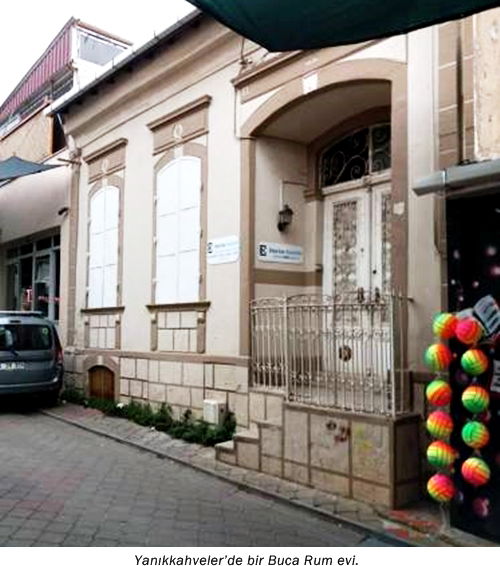
This article was created by atalarimizintopraklari.com. All rights reserved. All or part of this article cannot be used in books, magazines or newspapers without citing the source.